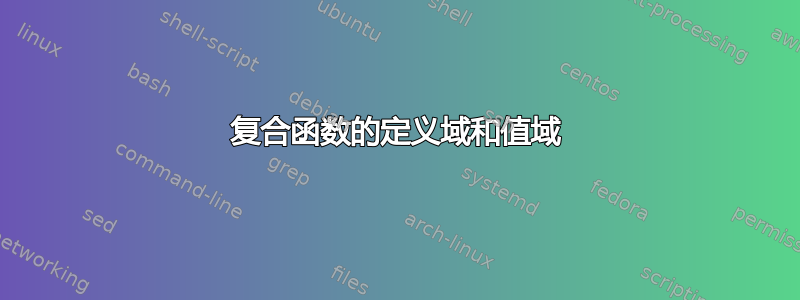
答案1
使用 Mathcha 完成的绘图:https://www.mathcha.io/editor
\documentclass[a4paper,12pt]{article}
\usepackage{tikz}
\begin{document}
\tikzset{every picture/.style={line width=0.75pt}} %set default line width to 0.75pt
\begin{tikzpicture}[x=0.75pt,y=0.75pt,yscale=-1,xscale=1]
%uncomment if require: \path (0,486); %set diagram left start at 0, and has height of 486
%Shape: Polygon Curved [id:ds15874517856748693]
\draw [fill={rgb, 255:red, 1; green, 204; blue, 153 } ,fill opacity=1 ][line width=1.5] (62,169.6) .. controls (89,158.6) and (112,155.6) .. (161,184.6) .. controls (210,213.6) and (149,221.6) .. (169,251.6) .. controls (189,281.6) and (68,307.6) .. (49,275.6) .. controls (30,243.6) and (64.88,248.85) .. (68,227.6) .. controls (71.13,206.35) and (35,180.6) .. (62,169.6) -- cycle ;
%Shape: Polygon Curved [id:ds7831539165095052]
\draw [fill={rgb, 255:red, 204; green, 0; blue, 1 } ,fill opacity=1 ][line width=1.5] (258,157.6) .. controls (285,146.6) and (321,160.6) .. (357,172.6) .. controls (393,184.6) and (369,195.6) .. (365,239.6) .. controls (361,283.6) and (339,268.6) .. (293,274.6) .. controls (247,280.6) and (260.88,236.85) .. (264,215.6) .. controls (267.13,194.35) and (231,168.6) .. (258,157.6) -- cycle ;
%Shape: Polygon Curved [id:ds4142099348862238]
\draw [fill={rgb, 255:red, 204; green, 153; blue, 0 } ,fill opacity=1 ][line width=1.5] (499,145.6) .. controls (525,136.6) and (554,187.6) .. (585,202.6) .. controls (616,217.6) and (571,275.6) .. (555,288.6) .. controls (539,301.6) and (500,302.6) .. (489,278.6) .. controls (478,254.6) and (473,154.6) .. (499,145.6) -- cycle ;
%Curve Lines [id:da3516098817239559]
\draw (108,191.6) .. controls (147.2,162.2) and (248.83,161.23) .. (288.64,189.81) ;
\draw [shift={(291,191.6)}, rotate = 218.66] [fill={rgb, 255:red, 0; green, 0; blue, 0 } ][line width=0.08] [draw opacity=0] (8.93,-4.29) -- (0,0) -- (8.93,4.29) -- cycle ;
%Curve Lines [id:da8949331129576243]
\draw (316,188.6) .. controls (355.2,159.2) and (456.83,158.23) .. (496.64,186.81) ;
\draw [shift={(499,188.6)}, rotate = 218.66] [fill={rgb, 255:red, 0; green, 0; blue, 0 } ][line width=0.08] [draw opacity=0] (8.93,-4.29) -- (0,0) -- (8.93,4.29) -- cycle ;
%Curve Lines [id:da6944762077247022]
\draw (95,235.6) .. controls (122,275.2) and (334,456.6) .. (551,230.6) ;
\draw [shift={(551,230.6)}, rotate = 133.84] [fill={rgb, 255:red, 0; green, 0; blue, 0 } ][line width=0.08] [draw opacity=0] (8.93,-4.29) -- (0,0) -- (8.93,4.29) -- cycle ;
% Text Node
\draw (86,199.4) node [anchor=north west][inner sep=0.75pt] [font=\LARGE] {$x$};
% Text Node
\draw (284,188.4) node [anchor=north west][inner sep=0.75pt] [font=\LARGE] {$g( x)$};
% Text Node
\draw (487,193.4) node [anchor=north west][inner sep=0.75pt] [font=\LARGE] {$f( g( x))$};
% Text Node
\draw (82,139.4) node [anchor=north west][inner sep=0.75pt] {$\mathrm{Domain\ of\ } g$};
% Text Node
\draw (268,109.4) node [anchor=north west][inner sep=0.75pt] {$ \begin{array}{l}
\mathrm{Domain\ of\ } f\\
\mathrm{or\ range\ of} \ g
\end{array}$};
% Text Node
\draw (200,142.4) node [anchor=north west][inner sep=0.75pt] [font=\large] {$g$};
% Text Node
\draw (417,141.4) node [anchor=north west][inner sep=0.75pt] [font=\large] {$f$};
% Text Node
\draw (525,132.4) node [anchor=north west][inner sep=0.75pt] {$\mathrm{Range\ of\ } f$};
% Text Node
\draw (57,305.4) node [anchor=north west][inner sep=0.75pt] {$\mathrm{Domain\ of\ } f( g)$};
% Text Node
\draw (251,349.4) node [anchor=north west][inner sep=0.75pt] [font=\large] {$ \begin{array}{l}
( f\circ g)( x) =f( g( x))\\
\mathrm{or\ } f( g)
\end{array}$};
% Text Node
\draw (488,305.4) node [anchor=north west][inner sep=0.75pt] {$\mathrm{Range\ of\ } f( g)$};
\end{tikzpicture}
\end{document}




